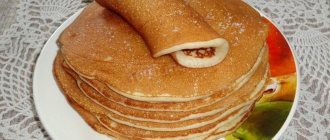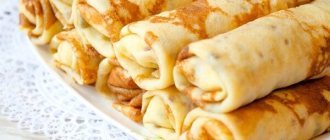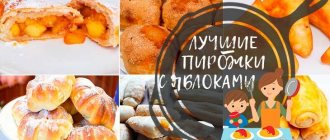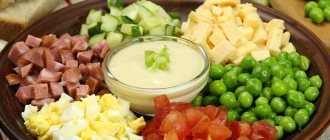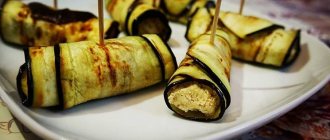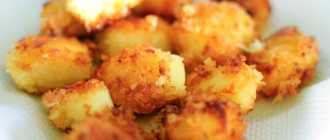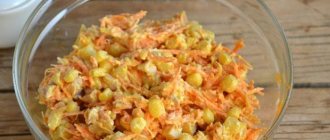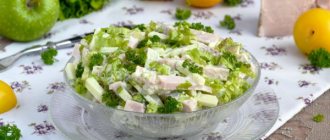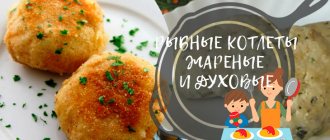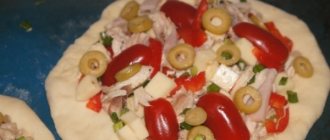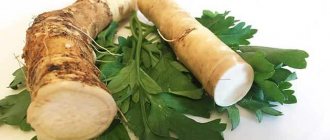Pancakes are one of the symbols of Russian cuisine, especially important for the ancient Slavs. Sour (yeast) and unleavened pancakes were most widespread among the Slavic peoples; moreover, only the cuisines of Slavic countries contain recipes for yeast-based pancakes.
In Rus', such products, mainly made from sour dough, appeared thanks to the Varangians in the 9th century. The main ingredients were milk, eggs, sugar, and various types of flour.
Most often they were baked on the most famous holiday of the East Slavic calendar - Maslenitsa. Here they didn’t skimp on ingredients; they cooked pancakes with milk or yogurt, topped them with butter, sour cream, honey, and treated passers-by and family members. Traditionally, pancakes were baked in a Russian oven, heated or with small dry birch branches and firewood. Thanks to such an oven, each pancake was covered with uniform heat, due to which holes appeared in the thickness of the dough, the surface became ruddy, and the pancake itself turned out to be very juicy and baked.
Today, of course, they are not baked in Russian ovens; ordinary frying pans are increasingly used for this purpose, but are cooked on electric and gas stoves. Rarely does a housewife have special cooking devices - pancake makers. Their surface heats up evenly, you can bake pancakes without using oil, and you can make them of different thicknesses. Well, how to fry pancakes correctly?
On a gas stove
Heat the frying pan on a gas stove over high heat. If the pan is made of cast iron, you can pre-rinse it. When the water from the surface evaporates, you need to pour in a little oil and distribute it evenly over the surface.
It is better not to use water with Teflon pans: temperature changes can damage the non-stick coating.
After the pan has warmed up, the heat must be reduced to medium and maintained at this level until all the pancakes are ready. This will allow the pancakes to bake evenly without burning.
In order to distribute the oil over the entire surface of the frying pan, you can use a pastry brush or silicone spatula.
How to make the cooking process easier?
The process of frying pancakes can be greatly simplified if you follow some simple tips:
- The pancake batter must be poured into a very well-heated frying pan, pre-greased, strictly in the center. After this, tilt the pan and use circular movements to spread the dough into an even layer. The holes can be closed with small drops of dough.
- If a lot of bubbles form during the frying process, it means there is not enough flour in the dough. Add a little at a time so that the pancakes do not come out too thick and undercooked. One large bubble in the center can simply be carefully pierced with a fork, being careful not to scratch the surface of the pan.
- If the pancake breaks when you try to turn it over to the other side, it means you made the dough too liquid. Add a little flour and one egg. It is the egg that makes the pancake dough plastic, and the finished products - dense and tear-resistant.
- Pancakes may stick to the surface of the pan due to poor coating or uneven heating. Make sure that the fire is located clearly in the center of the pan. If you cook in a cast iron frying pan, before frying you can calcine it with salt, then wipe it dry, then grease it with vegetable oil and start frying.
- For turning, it is best to use a wide silicone spatula. You need to turn the pancake over when its surface is not shiny and the edges are already slightly browned.
- If the pancake breaks when you turn it over, it means there is too much flour in the batter and not enough milk or eggs.
It is better not to store the finished pancakes, but to serve them immediately. But you can freeze them, including the fillings, and then reheat them in the microwave.
On an electric stove
First, you need to wait until the burner is completely warmed up and only then place the frying pan on it. After this, you need to wait a minute or two so that the frying pan is properly heated.
After this, everything is done according to the same principle as with a gas stove: pancakes should be baked over medium heat so that they do not burn.
An important point is choosing the diameter of the frying pan. It can be equal to or larger in size than the heating element of the stove, but in no case should it be smaller.
Potato pancakes with milk
Photo: Iuliia Kochenkova / Shutterstock
These are savory pancakes flavored with garlic and green onions.
Ingredients
- 3 medium potatoes;
- 250 ml milk;
- 1–2 cloves of garlic;
- 2 eggs;
- 1 teaspoon salt;
- 1 teaspoon sugar;
- 4 tablespoons vegetable oil + for greasing;
- 150 g flour;
- a few green onions.
In a slow cooker
You need to select the “Baking” mode, which is present in almost all modern multicookers. The bottom of the bowl can either be lubricated with oil or not.
See also: What is the difference between butter dough and yeast dough?
As a rule, all modern bowls are made of non-stick coating, so there will be no problems with pancakes sticking.
While baking pancakes, you should not change any settings on the multicooker; in automatic mode it will maintain the required temperature.
What heat should you use to bake pancakes on an electric stove?
It all depends on the power of the kitchen unit.
- First, wait for the burner to warm up, then place the frying pan and wait from 30 seconds to 2 minutes.
It is also important to choose the optimal ratio of the diameter of the frying pan and the burner - they must match or the heating element can be smaller, but not larger.
- Pour the oil, distribute it evenly over the dishes - for this you can use a napkin - this will make the layer thinner and even, or a raw potato (onion), cut in half: prick the vegetable on a fork or knife, dip the cut side into the oil and wipe the bottom.
- Pour the dough onto one part of the frying pan and, tilting it in different directions, distribute it over the surface.
- We monitor the heating of the pancake, as in the case of a gas stove, focusing on the baked middle.
Turn the finished pancake over using a wooden, silicone or metal spatula, depending on the type of pan, and fry for half a minute on the other side.
Which pan to choose for pancakes
Many housewives prefer cast iron frying pans and pancake makers.
Teflon pan for pancakes - pancake maker
✅ Cast iron warms up evenly and keeps warm for a long time, thanks to which you can bake pancakes quickly and not be afraid that part of the pancake will remain unbaked.
Teflon frying pans are cheaper than cast iron ones, but their disadvantages include a surface that is very easy to damage. A few scratches and pancakes in a Teflon-coated frying pan will burn.
✅ However, Teflon frying pans are much less heavy in weight and, as a rule, it is easier for beginners to learn how to cook pancakes.
You can also find marble and copper frying pans in stores, but such models are too expensive and difficult to maintain, so it’s definitely not worth purchasing them exclusively for pancakes.
Pancake pans are frying pans designed specifically for baking pancakes. They are distinguished by low sides, which make flipping pancakes easier.
Well, who doesn't love pancakes? They can be eaten plain or with sweet and savory toppings. This hearty dish can be served as an appetizer and even for dessert. But in order to enjoy its taste, you will have to spend a couple of hours preparing them. Today, housewives prepare them in the simplest way - frying them in a frying pan. If you choose the right recipe and follow the frying process, your pancakes will delight you with taste and beautiful color. But what to do if they burn or, on the contrary, fry for too long? Most likely, you have selected the wrong fire mode, the choice of which depends on several factors.
How to choose the right pan for pancakes?
Despite the fact that the recipe for preparing the dish is very simple, many people have problems when preparing pancakes. And it’s not surprising, because most recipes do not indicate how much dough to pour into the pan and how long to fry the product. You will learn this after 2-3 cooking thanks to culinary experiments.
The main point that you should consider is the choice of frying pan; the duration of baking depends on this. Choose high-quality cookware with a non-stick coating, preferably ceramic or aluminum. Teflon pans are not the best option as they are not durable. Thanks to the non-stick coating, the pancakes will not stick.
Check out our post How to Make Delicious French Crepes
If you prefer a classic look, opt for a cast iron frying pan. But in order to prevent the dough from sticking, you need to thoroughly heat the container with vegetable oil. Using such utensils is not very convenient, so modern housewives opt for more convenient options.
At what heat to fry pancakes in a frying pan: useful information
Any type of stove is suitable for frying - both electric and gas. As we said above, it is important to consider what kind of pan you are using.
If you opt for classic cast iron cookware, fry the baked goods over medium heat. The products will brown and bake quite quickly. If you set the heat to low, they will cook for too long, and if you set the heat to high, they will burn. Do not forget to add a sufficient amount of oil to the container before calcination. After 1-2 minutes, lift the edges; if they are golden brown, you can turn the product over.
Helpful tip: shoot at the surface of the pancake. If there is no wet dough on the surface, you can turn it over. If there is wet dough, reduce the heat and fry the product a little longer.
At what heat should you fry pancakes in a frying pan? If you have cookware with Teflon or non-stick coating, you will not have to bake it for a long time; the process will noticeably speed up. Heat it over medium heat, grease with a small amount of vegetable oil. Pour in the required amount of dough and distribute it evenly, turning the pan on its weight in different directions. Fry until golden brown on each side.
How to fry pancakes on an electric stove? First of all, you need to choose a suitable size burner; it should be the same as the diameter of the frying pan. If the burner is too large, the products will burn. If it’s small, they will take too long to cook.
Turn on the burner to medium and wait for it to start heating up. Place the frying pan and wait 1-2 minutes, add vegetable oil to the container, rub it with a napkin so that it is evenly distributed. Pour in the required amount of dough and tilt the pan in different directions. Fry for 1-2 minutes with a spatula (silicone or wooden, so as not to damage the coating).
How to fry pancakes in a slow cooker?
If you don't have a stove and frying pan on hand, you can use a slow cooker. But keep in mind that this cooking method is not the fastest and to cook a lot of pancakes, you will have to spend several hours.
Turn on the “Baking” mode, then grease the container with a small amount of vegetable oil. Pour in a small amount of batter, distributing it evenly. After 3-4 minutes, check the edges with a spatula; if they are browned, you can turn the product over. Leave to fry for another 3-5 minutes (depending on the amount of dough, bowl size, multicooker power).
If the pancakes “break”: what to do?
Have you cooked a pancake, but it's not elastic at all? In addition, the pancakes begin to literally break and crack! Why is this happening? Most likely, you prepared too “dry” dough. The situation is easy to correct - add a small amount of milk and a couple of tablespoons of vegetable oil.
At what heat should you fry pancakes in a frying pan? The most optimal temperature is considered to be medium frying; the products will have time to bake. Bon appetit!
Women's site Delafe.ru
Instructions: how to fry pancakes correctly
✍ Ingredients:
- eggs – 2 pcs
- milk – 200 ml
- sugar – 3-4 tsp.
- flour
- soda
- lemon juice
- sunflower oil
Preparation:
- The milk should be slightly warmed first.
- In a deep bowl, beat eggs with sugar, add milk.
- Pre-sieve the flour to avoid the formation of lumps.
- Add flour to eggs with milk. An important point: flour should be added until the dough has a consistency similar to liquid sour cream. The thicker the dough, the thicker the pancakes will be, so at this point you should focus on your preferences.
- In a glass, mix water (about 1/5 of a glass) and soda on the tip of a knife. Add lemon juice to this mixture and, while it sizzles, quickly pour it into the dough. Mix.
- Pour a couple of tablespoons of sunflower oil into the dough.
- Heat a frying pan over high heat, add a small amount of oil.
- Fry pancakes over medium heat. You need to turn it over after the edges of the pancake darken and holes appear on the surface of the pancake itself. You need to hold the pancake on the second side about half as much as on the first.
In order for the dough to be evenly distributed over the surface of the pan, you need to pour it on one side and then, tilting the pan by weight, let it spread. If you do this too slowly, marks or stripes will remain on the surface of the pancake, which do not look very aesthetically pleasing.
What to consider when kneading the dough?
Before frying the pancake, you need to knead the dough correctly. To do this, it is best to use a deep enamel pan or bowl with high sides, in which you can calmly stir the dough. If you add yeast, then the container must be at least three times larger in volume than the volume of the finished dough, taking into account the fermentation process.
There are a few simple rules when kneading dough:
- The liquid - whey, water, milk or kefir - must be heated. If you are preparing yeast dough, heat the liquid to a maximum temperature of 42-45 degrees, otherwise the yeast will spoil at a higher temperature. Even if you don't use baking powder, you still need to warm the milk or water a little so that the sugar and salt dissolve more easily.
- Too many eggs make the pancake very dense, but if they are missing, the dough may tear when trying to turn the pancake to the other side during frying. It is optimal to take about 2 chicken eggs per half liter of liquid.
- It is better to dilute pancakes with milk slightly with water, then they will turn out fluffier and easier to rise.
- As a leavening agent, you can use dry or fresh pressed yeast, soda, a special baking powder, or add nothing at all. In the latter case, you can make the thinnest plastic pancakes possible.
- Fat must also always be added to the dough, otherwise the pancakes will stick to the pan. This can be any odorless vegetable oil, as well as melted margarine, cooking fats, and butter. For half a liter of liquid, adding 2-3 tablespoons of fat is enough. You can add 1 tablespoon of butter to pancakes made with milk.
We recommend: Video: making cakes in production
It is not necessary to knead the pancake dough for a long time; it is enough to combine all the components well. After kneading, cover the bowl with the dough with a cloth or gauze so that it has access to air. Yeast dough rests for at least half an hour; regular dough or baking soda should sit for about 10-15 minutes before frying the pancakes.
Frying with heat
The described tips on how to properly fry pancakes are suitable for almost any recipe. I would also like to say something about the pancakes. The dough is prepared in the classic way using flour, eggs, milk or fermented milk products. And in a separate bowl the filling is made from meat, fruits, mushrooms or other products. During the frying process, pour dough into the bottom of the frying pan and place a spoonful of baking on top. When the bottom crust acquires a golden hue, use a spatula to turn the pancake over and fry the other side.

